look who’s back on substack! if you’re looking for proof that the artist’s way works, here I am writing my little essays again after a four-year hiatus. i decided to write about my “creative recovery” and what i’m taking with me after finishing the book (program? retreat? cult initiation? whatever you want to call it). hope you enjoy.
About five months ago, I started The Artist’s Way from a hotel room in Atlanta. By “started,” I mean I read the introduction and tried to quiet my skepticism long enough to give a self-help book that called itself a “spiritual path to higher creativity” a shot.
I wanted to make music and write again, but I felt stuck. I couldn’t muster up the courage or energy to pick up my guitar or get a few words on a page. My confidence was at a critical low point after years of being haunted by unfinished projects. I was even avoiding listening to music or reading Substack articles or watching vloggers I used to enjoy out of jealousy, because they were making cool things they were proud of and couldn’t bring myself to start. I knew I needed some kind of intervention, even if that seemed too dramatic a word at the time.
Looking back, I think it was helpful to start my “creative recovery” in an unfamiliar environment. It’s easier for me to open my mind when I’m also physically pulled out of my comfort zone, the safety blanket of familiar routines, patterns and images unavailable.
I was in Atlanta for a work conference, but I managed to squeeze in some time for sight-seeing as well. I visited the Center for Puppetry Arts and saw Kermit and Miss Piggy. I went to Ponce City Market and hunted for trinkets from local vendors and artists. I spent an entire afternoon wandering around the Georgia Aquarium, sipping a slushy cocktail and staring in awe at the belugas and whale sharks.
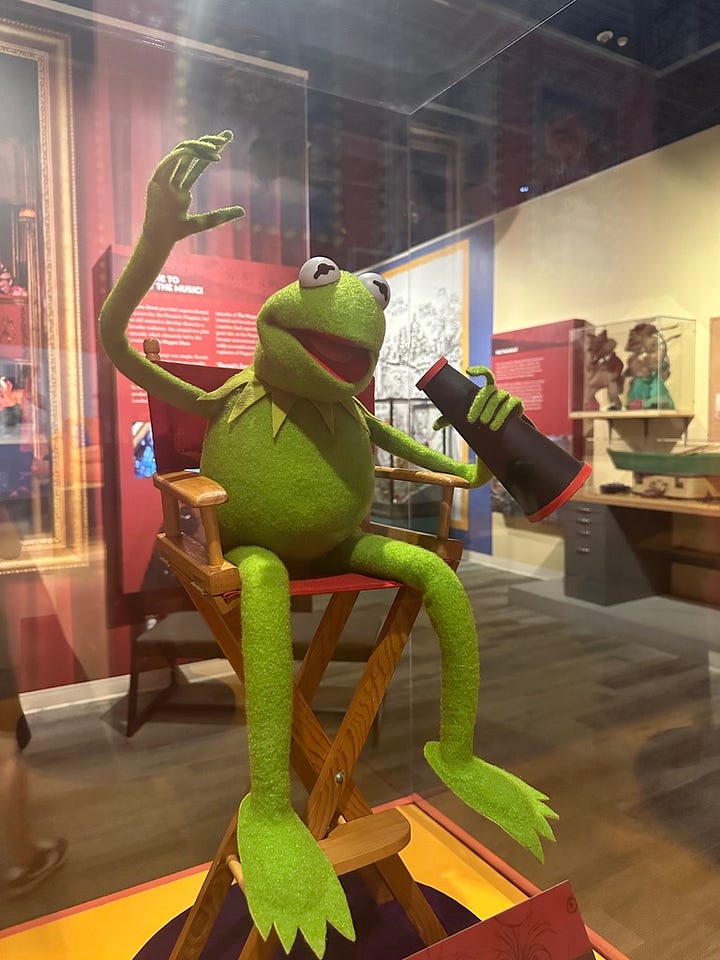

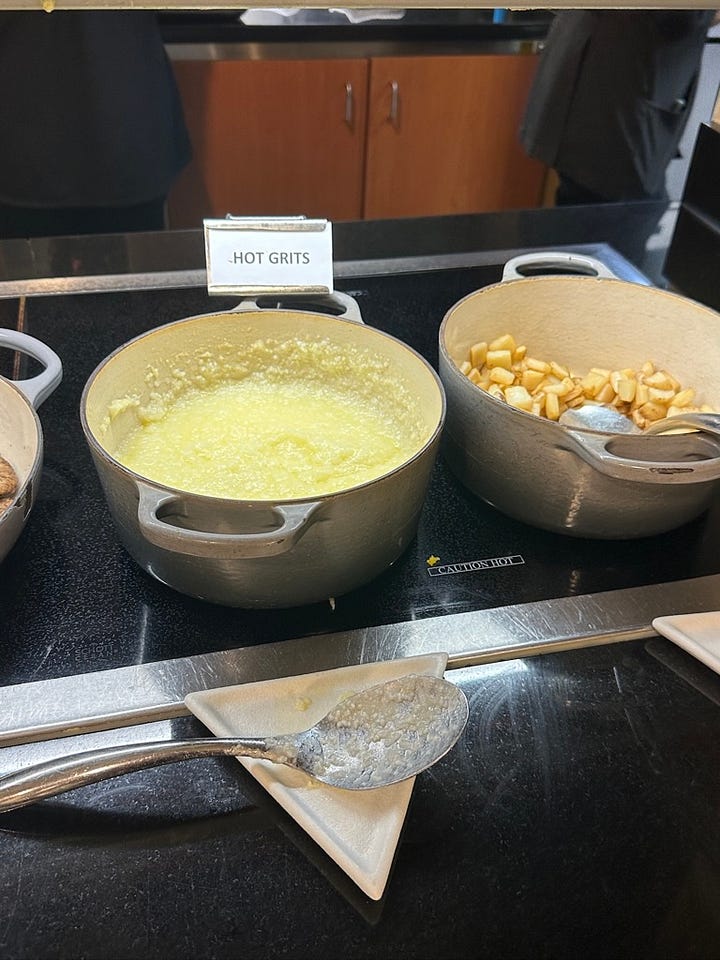
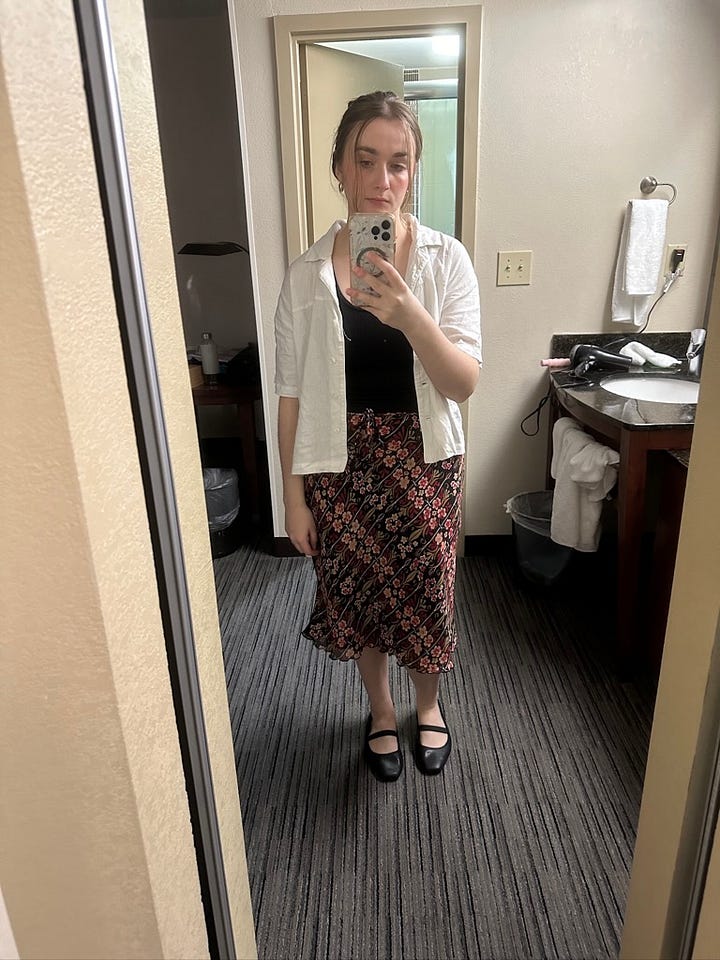
Without realizing it, I was essentially doing what Julia Cameron, the author of The Artist’s Way, calls an “Artist’s Date”: a solo outing designed to let your “inner artist” play. She suggests designating time each week to do things your younger self would enjoy, like visiting a pet store or finger painting. The purpose of the Artist’s Date is to “fill the well” and gather images and experiences to bring texture and fresh perspectives to your work (and your life).
When I first read this passage of the book, I thought this was a great idea. Give myself a couple hours a week to just...have fun? Sign me up. My thoughts wandered back to the aquarium, where hours ago I had watched in amazement as three dolphins launched themselves into the air, doing a 360-degree turn in perfect symmetry. I decided I was ready to surrender to this new artistic method, eager to make more space in my life for wonder and beauty and play again.
Of course, like so many life-changing epiphanies, this was harder to commit to once I was back home and back to normal life, with deadlines and anxieties and self-doubt once again filling up my mental capacity.
While I continued to read The Artist’s Way and work through weekly exercises and daily Morning Pages (three pages of stream-of-consciousness writing), the Artist’s Dates quickly became the most difficult part of the process for me. I always had an excuse. I was too tired, my weekend was already booked, I was behind on work. It felt so frivolous to pencil in two hours just for my own creative whims when a million other things were demanding my attention.
Cameron claims in the book that this is not an uncommon experience. “You are likely to find yourself avoiding your Artist Dates,” she writes. “Recognize this resistance as a fear of intimacy — self-intimacy.”
The Artist’s Way does this often. Just slaps you in the face with an attack so on the nose that it feels like Julia Cameron can see through the pages into your soul.
Perhaps more than anything, The Artist’s Way showed me in painful clarity that all of my excuses for why I can’t dedicate time to writing, or making music, or any of the other creative activities I want to pursue are just that: excuses. The real problem is the person that put all those excuses in my way (me), and her problem is fear. A fear of intimacy — self-intimacy.
So I kept trying. After putting off Artist’s Dates for a few weeks, I went to a craft store and picked up some thick card stock paper, Mod Podge and little foam brushes. I picked up a few magazines at the checkout counter and dug up some old ones collecting dust on my bookshelf.
I loved making collages growing up. My sister and I would sit at the kitchen table, where my mom stacked copies of Better Homes and Gardens, Sunset and Highlights. We’d scour for images that sparked excitement, struggling with safety scissors and decoupaging our clippings onto old laundry soap containers or shoe boxes. This could keep us occupied for hours.
I hadn’t made a magazine collage in years. I felt a little silly at first, combing through a Drew Barrymore magazine and cutting out phrases like “feel the love” and “a new adventure.” I thought about all the other things I could be working on and felt the familiar guilt creep in, on its way to sabotage me.
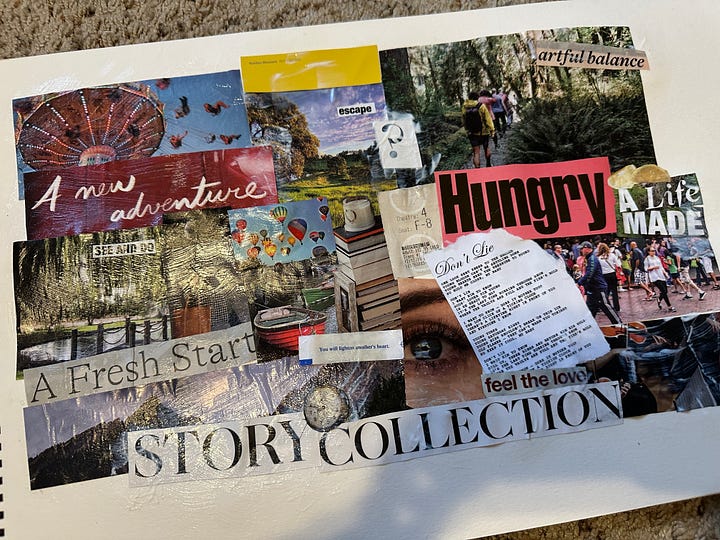

But I pushed through, until I didn’t notice the time passing as much and started to remember what makes collaging so fun. I love the process of curation: of observing and appraising and putting seemingly unconnected things together to make something new. It’s exciting to go from a vague idea and a blank canvas to watching a mood start to manifest on the page, often turning out completely different than you expected it to.
I’ve made a small collection of collages since starting The Artist’s Way. My first was centered around my intentions for the program and the artist I hope to become. Then I made one for my little sister, themed around her moving away for college and embracing new experiences. I also made a vision board for 2025, which I opted to make digitally so I’d have more images to pull from (largely sourced from Pinterest). But it still gave me that same joy of curation and creation.
Vision boarding has exploded in popularity in the past few years. Searching #VisionBoard on TikTok will show you hundreds of videos describing the practice as a powerful tool for manifesting your dream life. While this might sound a bit woo woo, I think there’s something to the idea of visualizing your goals to motivate yourself to take action. In the same way that the corporate world swears by SMART goals (specific, measured, achievable, relevant, and time-bound) to maximize performance through clearly articulated objectives, vision boarders visualize their dreams so they have a clear, detailed sense of what they are going after.
Morning Pages, another Artist’s Way-ism, have a similar function in my life. I don’t deliberately use them as a tool for manifestation, but committing to three pages of stream-of-consciousness writing about whatever is on my mind each day gives me similar rewards.
When I’m consistent with my Morning Pages, I’m also consistent with my writing projects, picking up my guitar, and finding classes and workshops to help me gain new creative skills. I think it’s because the pages force me to be present everyday. They remind me of my desires and help me work through my problems instead of numbing out.
I still struggle my avoidant tendencies, but I’m better at recognizing the problem now. The Morning Pages call attention to my bad habits and help me realize that when I choose to scroll on TikTok instead of untangling a plot idea for my novel, I’m running away from my fear of failure. Once my issues are jotted down on the page, documented in my own handwriting, I can clearly see what I need to work through to get where I want to go.
Even now, writing this, I want to shut my laptop lid and give up, ashamed at how difficult it is for me to articulate what I mean. This is, of course, part of the process. Writing a shitty first draft, as Anne Lammot famously instructs us to do in her excellent book on writing, Bird by Bird.
It’s mortifyingly vulnerable to stumble through the dark, clumsily reaching for the right words to get even close to what I wish to convey. But it’s necessary. I don’t want to run away anymore. I want to be okay with trying and failing without being so embarrassed to be seen doing so.
I love how Jillian Steinhauer described The Artist’s Way in The New York Times Magazine: “Loving ‘The Artist’s Way’ feels strangely embarrassing — because it’s less rational than it is sincere. But as Cameron knows, authenticity is the best place for an artist to begin.”
Yes, The Artist’s Way is embarrassing. Vision boards and SMART goals and 2025 bingo cards are embarrassing. Admitting what you want out loud — and knowing you might not be able to make it happen — is embarrassing. But it’s also sincere. And I’d rather be a bumbling but sincere artist than a smug cynic who never tried at all.
Shortly after completing my final week of “creative recovery,” I found myself floundering a bit without the gentle structure of The Artist’s Way that I’d grown equally exasperated by and fond of. That’s how I found myself signing up for my latest artistic adventure: Adrianne Lenker’s songwriting workshop from School of Song.
The course is a year-old now, so I’m following along through class video recordings instead of live Zoom sessions. The first assignment was to quickly assess your surroundings, take notes on what you see, and throw those descriptions into the chat (or, in my case, jot them down on my legal pad). Then, I had 20 minutes to use the images that my virtual classmates and I had accumulated to write a song. The process was similar to The Artist’s Way’s method of “filling the well” through Artist’s Dates to gather images you can use in your creations — except on a major time crunch.
But I did it. I wrote a song. The chords were simple. The lyrics were unprofound. But it was sincere. It was proof that I’m not creatively blocked, not really. I just need the courage to bring my ideas out of myself, as imperfect and incomplete as they will be at first.
In Week 2 of The Artist’s Way, Julia Cameron lays out ten “rules of the road” to guide you on your creative path. In my copy of the book, I’ve drawn a little heart next to Rule #10, which felt especially important to commit to memory: “Place this sign in my workplace: Great Creator, I will take care of the quantity. You take care of the quality.”
I don’t have a physical sign by my desk that says this. But the quote is on my vision board, which I’ve set as my desktop wallpaper (so I think that counts). This way, when I slump in front of my computer each morning, I’m forced to read this promise to myself to be a little less precious. To stop making perfect the enemy of good. To just try, and see where that takes me.
So here’s to showing up and doing the work.
if you made it this far, thank you so much for reading! shoutout to eric for reading this essay pre-publication and giving great feedback. :’) before i sign off, i also have a few housekeeping items to share:
you might have noticed this newsletter has a new name: noted by jen. i wanted something that better described what i’m trying to do here: observe, document, work through ideas.
in that spirit, i’m also adding a section at the end called ‘sticky notes,’ which is basically just a spot to dump links to media i’ve been consuming and/or quick thoughts that didn’t warrant a whole essay.
see the inaugural edition of sticky notes below :) that’s all for now, take care!
〰️ sticky notes 〰️
Rayne Fisher-Quann wrote an incredible essay on AI and writing, which makes the case for writing without robot help and the value of taking time to labor though your ideas. I’ve been thinking about it a lot as I’ve been getting back into creative writing and contemplating why I feel compelled to do it, struggle and all.
I finished two books over Presidents Day weekend: The Message by Ta-Nehisi Coates (which was fantastic and gave me a lot to think about in regards to writing and responsibility and how rhetoric shapes our political realities) and Heartbreak is the National Anthem: How Taylor Swift Reinvented Pop Music by Rob Sheffield (which I’m sorry to say I didn’t love…ranted about it on Goodreads if you want to know more).
If the constant barrage of Trump headlines is also melting your brain, I recommend Vox’s The Logoff newsletter so you can stay informed minus the doomscrolling.
I’ve become addicted to a bird app that’s not Twitter. It’s called Finch and it’s a self-care/productivity tool. Basically, you take care of a little bird, and when you drink water or take a walk you get money to buy it cute clothes and room decor. I have mixed feelings about this and how badly my brain is broken that I need this level of gamification to be motivated to take care of myself…but it’s fun. Maybe I will write more about this at some point.
I haven’t stopped thinking about this extremely relatable Nathan Zed video since I watched it. If my Artist’s Way essay resonated with you, this video definitely will too.




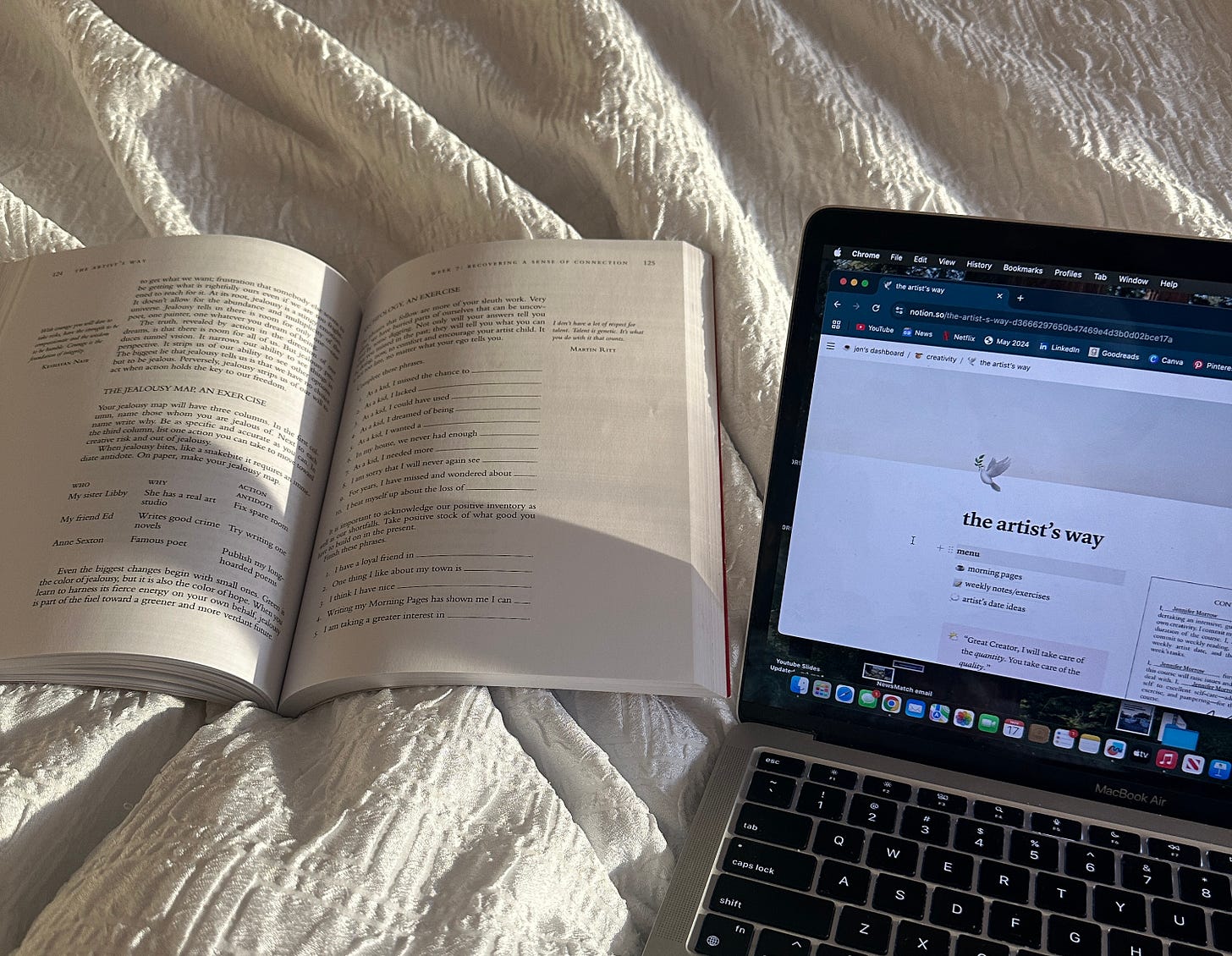

Loved this, Jennifer! Inspiring me to start the artists way <3
Such an inspiration! Guess I should start really writing now too 🙈